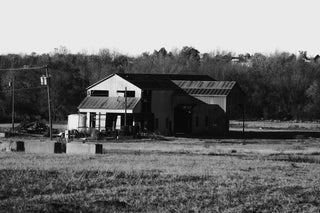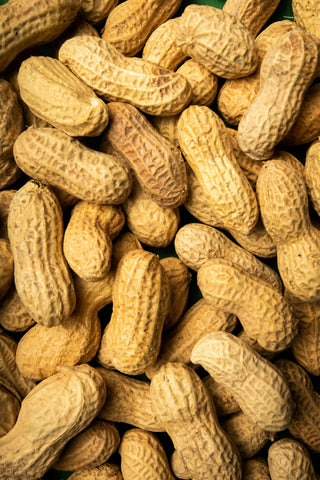

In the 19th century, the Five Civilized Tribes were sent to Indian Territory bringing with them traditions and crops from the South, including the humble peanut.
Originally brought from Africa, the peanut became a staple in the South, prized for its high nutritional value. Its versatility fed not only communities but also livestock.
This hardy legume found its place in small gardens throughout Indian Territory. With its ability to thrive in sandy soil, the peanut adapted well to the sandy, loamy earth of the Cross Timbers, Ouachita Mountains, and Sagebrush Rangelands.

At the turn of the twentieth century, newspapers began advocating for peanut farming, publishing instructional articles to guide local farmers. Agricultural agents from Oklahoma A&M College (now Oklahoma State University) and the Agricultural Experiment Station also promoted peanuts as a viable alternative to cotton. By the early 1920s, as farmers in southeastern Oklahoma shifted to peanuts, the crop quickly took root.
In 1922, Bryan County produced 120,000 bushels, and by 1923, the state cultivated nearly 5 million pounds, valued at $317,000. Production skyrocketed through the decade, reaching 13.3 million pounds by 1927 and 24 million pounds the following year. This rapid growth spurred the rise of related industries, such as the opening of a peanut butter manufacturing plant in Sand Springs in 1922.
The 1930s brought hard times to Oklahoma’s peanut farmers. Prices, which had stayed steady, dropped sharply, hitting just 1.6 cents a pound by 1932. The Dust Bowl and Great Depression took their toll, with farmers only producing 15.9 million pounds from 60,000 acres by 1932. By 1937, the acreage had fallen to 34,000, and production was barely a third of its peak.
In 1934, the federal government stepped in with a quota system, and by 1941, production rose again to 45 million pounds. After the war, peanut processing plants in towns like Muskogee, Bristow, and Durant were a sign of recovery, and Oklahoma A&M opened a peanut research station at Stratford to ensure the crop’s future.

Peanuts quickly became a staple crop for more and more Oklahoma farmers throughout the decades. In 1987, Oklahoma ranked 7th as America’s leading peanut producing states with over 100,000,000 pounds. But as changes in the Federal Subsidy program came and market rates shifted, the peanut became less lucrative for most farmers. From 2002 to 2004, peanut production fell almost 50% in the state.




